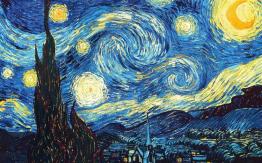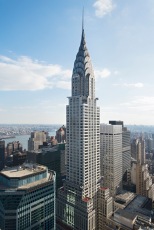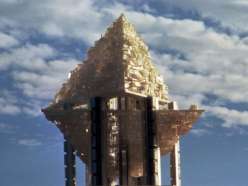- The Renaissance was an important period of time in human history. Humans were coming out of a time where people were mainly concerned with religion and starting to build ideas that would be important to architecture and design as we see it today. In the lecture, it was mentioned that this was an in-between time. People were trying to rediscover culture unlike the ancient times where they where constantly inventing and looking forward. Italy is very important to how we look back on the Renaissance today. There was a shift in thinking.I observed from the lecture that the Renaissance was a rebirth of antiquity, so they were looking back on past culture to redefine their lives. Instead of being a part of a public setting, they focused on the individual meaning themselves. They backed off from religion and wanted government to direct their lives. They also, rediscovered the natural world. We tend to do this once our looking forward stage needs a rest. They used natural proportions and old architectural styles to mark individuality instead of being uniform. Instead of using religion as a way to direct the public, deity worshipping was a more one to one affair. I think the picture below says something about the Renaissance because they were taking designs from Ancient Greece and using them in their buildings, but they were not using the meaning of the design as the Greeks did; it was more decoration.

2. Venice was and is an interesting design port. They had never built anything like it before, so it was a wonderful new idea. It mainly stays medieval because it was hard to not be unified on a floating city of stone. Individuality would have been more difficult. All of the buildings have to be unified like because it’s a lone floating city. The Piazza San Marco is the major square in Venice unifying it in a larger scale. Venice has a distinctive atmosphere or a genius loci. The lecture mentioned that the snaking waterways and canal, crisp colors, and sparkling water are what make Venice distinctive to other parts of Italy and even the world. It is hard to reproduce another Venice because it would take away from it’s genius loci and the distinctive geography that is needed to make the canal. However, in Las Vegas, they have tried to replicate it, but it doesn’t compare because the atmosphere is not the same. I chose a picture of the main square because I think it is a good example of unity and that represents Venice well because as the Renaissance would progress, Venice needed to stay medieval because of the tendency to be a unified place.
3. The difference between the medieval and renaissance time period is massive. The medieval time period used public money where the no one showed wealth. There was functional housing in medieval villages. The renaissance used private money to show wealth and status in the community, especially in Italy. The picture of the Palazzo de Medici shows the money they had and the class system which told people they could afford a lot of art and status. it was vanity housing in which they were concerned with image. The medieval time period was extremely focused on religion. God controls all. The church is in control of public services and is basically the power source of the time. The renaissance differed because man was supposed to be in charge of their own destiny. Rich people held their own private chapels built by artisans who decorated them beautifully for status. The powerhouse in the renaissance were the merchants and guilds in the city-states. They were concerned with image. Medieval towns were unplanned and disorganized, They boasted slow growth where society was intertwined publicly and privately. The renaissance was a unified axis with rapid expansion and need for space. They attempted to separate their public and private dealings.

4. Andra Palladio was an extremely important architect during the renaissance period. His work changed the architecture forever. It is still an inspiration used today. He mainly focused on a main larger focus point with two accompanying sides. The picture included is of my case study, Mount Vernon, which uses this inspiration as a design for a window in the “New Room”. There is a larger pane of glass surrounded by two smaller panes. Palladio changed Venice in to having a single facade. He designed villas that had never been seen before. The Villa Rotunda was a party house that encompassed four sides that allowed the users to see different aspects of the landscape. This would tie in with the unit of experience well. He designed the Villa Rotunda to emulate the Pantheon, but on a residential scale. He also built the Villa Barburo. This had the design of the larger focal piece with two sides, but he used this on a residential scale. This made the residence have a sense of power and control because it had a vast lawn and demanded your attention. It was noted that the renaissance was known for being mainly horizontal in the layouts. This would make sense for a grand house demanding power and control.

5.The baroque design period came after the renaissance, so things were still similar, but a little different. There wasn’t a need to be a total individualist like in the renaissance. Many countries were similar in design aspects. France, England, and Spain became a part of the architecture powerhouse. They were testing boundaries and breaking rules as the lecture noted. Designers were using different mediums to express a new idea. The Baroque period used engagement with all the senses, such as using light and color for visuals. Maybe texture became involved. There was a unity among the arts unlike the renaissance where everyone was doing their own thing. There was theatricality and dramatic lighting used. The Ecstasy of St. Theresa is a good example of a designer using light and color to display an awesome piece of art. This piece is also in a church which is interesting because of the sensual nature of the piece. The designers in the Baroque period used their imagination for new ways of seeing art. They focused on exteriors and interiors together. They were in to surface design. They were for anti-rules, so new ways of building and designing could be used to explore new ways of thinking.


















